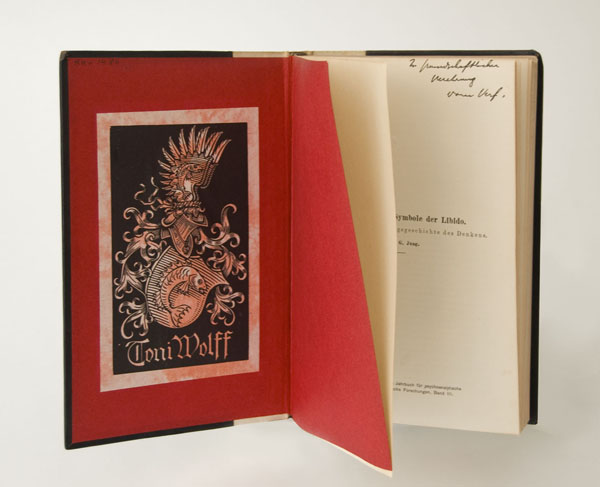The Red Book, a red leather-bound document by Carl Gustav Jung about his long-term process of self-discovery following a series of professional and personal set-backs, such as the estrangement from his teacher Sigmund Freud (1856-1939), was not publicly accessible until its publication in the autumn of 2009.
C.G. Jung, Wandlungen und Symbole der Libido (Transformations and Symbols of the Libido), Leipzig/Vienna 1911-1912 (ETH Library: Rar 1486)
However, Jung clearly highlighted the departure from Freudian psychoanalysis for both expert circles and a broader, interested readership with his work Transformations and Symbols of the Libido. A Contribution to the History of the Evolution of Thought, which was published in two parts in Jahrbuch für psychoanalytische und psychopathologische Forschungen in 1911 and 1912.
Jung presented a special copy of Part One with the handwritten dedication, “In amicable adoration from the author.” on the title page to his close colleague Toni Wolff (1888-1953), who had worked on the edition. The following year, he inscribed the special copy of Part Two with the words, “Kind regards and many thanks, the author.”
The two parts were bound into a semi-vellum volume with book boards covered in black leather paper, a cover and the book’s body with a red flyleaf. Toni Wolff’s bookplate with the reversed crest of the Zurich-based Wolff House was placed on the inside cover. For a work like this, the colour selection for the binding and especially the flyleaf was presumably no coincidence or purely for visual purposes. The attempts to give the originally somewhat plain exterior of the special copies a more noble look that befitted their sentimental value for the author and recipient, however, came at the expense of the inscriptions: while trimming the body of the book with a guillotine, the ascenders of some letters were cropped, compromising the overall aesthetics of the title pages. Instead of harming the lavish symbolism of the gift, however, this might actually have enriched it with another possible interpretation.
Toni Wolff eventually passed the unique piece on to Jung’s dentist, Siegmund Hurwitz (1904-1994), who had been trained as an analytical psychologist by Jung, herself and Marie-Louise von Franz (1915-1998) and dabbled in Jewish mysticism. Hurwitz donated the volume to ETH Library along with original letters from Jung to him and his wife in 1982.
Here, the book, which still gives off a whiff of cigarette smoke as one leafs through it (Wolff was a heavy smoker), is kept in the special Rare Books collection. Jung’s letters to Siegmund Hurwitz and his wife, Lena Hurwitz-Eisner, who died in 1965 and was co-editor of the Collected Works of C.G. Jung, are located in the holdings of ETH Zurich University Archives. The Archives and Personal Papers also curate C.G. Jung’s personal papers, which he bequeathed to ETH Zurich in his will; Jung had taught psychology at the university as a private lecturer and adjunct professor from 1933 to 1941 and was awarded an honorary doctorate in 1955.

